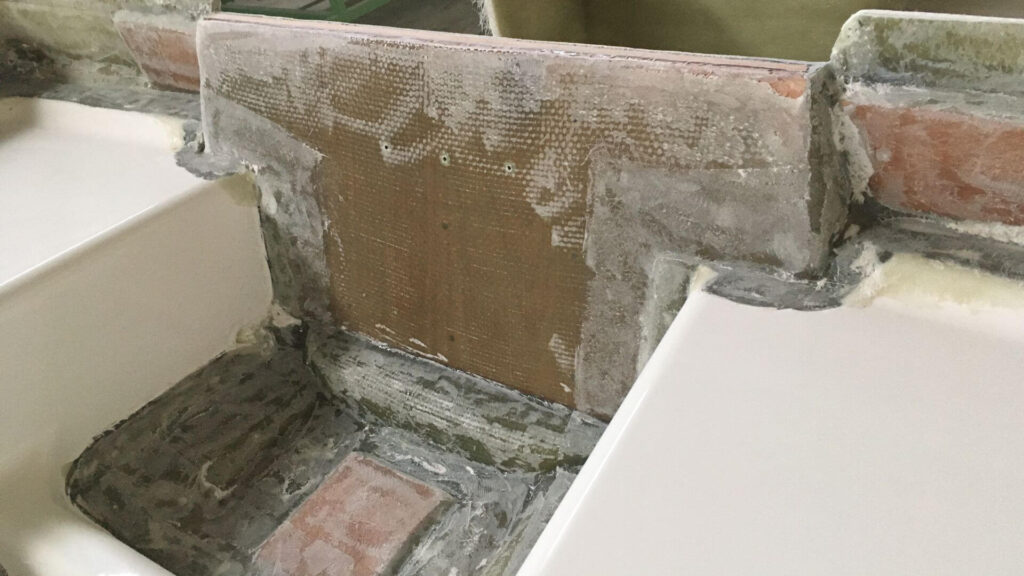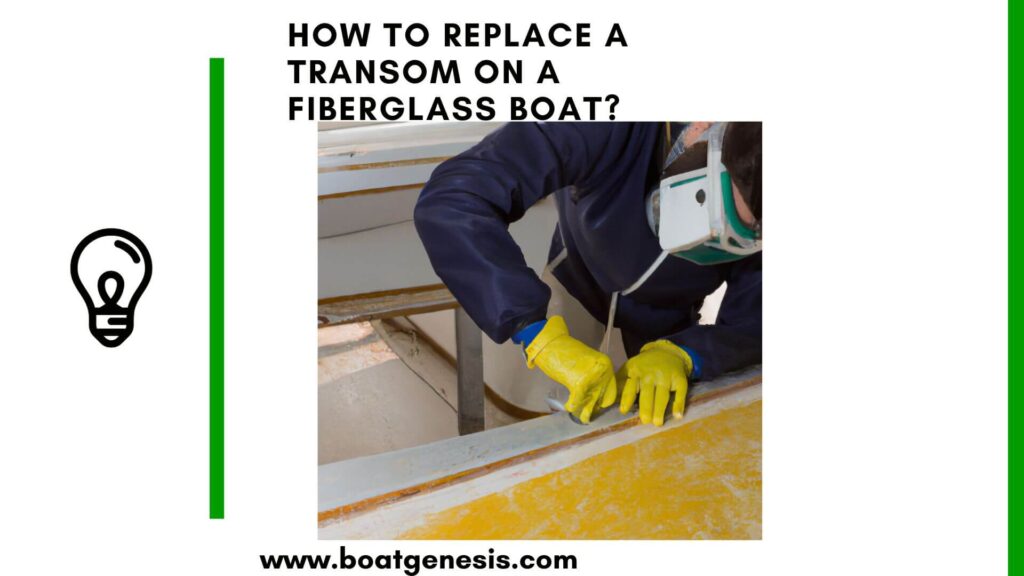A transom replacement is a common repair for fiberglass boats that have damaged transoms. This straightforward DIY project can breathe new life into an older boat and have it back on the waters in no time.
Let’s get started.
How to Replace a Transom on a Fiberglass Boat?
Here are a few steps to follow for replacing the transom on a fiberglass boat.
1. Assess the Transom Damage
The first step is to inspect the damage and determine how extensive the repairs need to be.
Look for cracks, soft spots, or areas where the transom is pulling away from the hull. Minor damage may only require an epoxy injection to re-bond it.
==>> Read my full guide on fiberglass boat transom repair here.
More significant damage like rotting or splintering means a full transom replacement.
2. Gather the Necessary Materials
You’ll need marine-grade plywood cut to size, fiberglass cloth and resin, a silicone sealant, stainless steel bolts, and basic tools like a jigsaw, sander, and drill.
Safety gear like gloves, goggles, and a respirator is also essential when working with fiberglass.
3. Remove the Old Transom
Start by removing the outboard motor, steering components, and any electronics or wiring mounted on the transom. Then use a jigsaw to cut out and remove the entire damaged transom.
Sand and grind the inner hull surfaces for the new transom to bond tightly.

Note that you will have to remove this “old” transom if you notice real damage to it.
4. Install the New Transom
Measure precisely and cut your marine plywood to size.
Test fit it into the transom opening you’ve created. Pre-drill any holes for hardware mounts or wiring.
Apply thickened epoxy to all contact surfaces and bolt the plywood in place securely. Allow the epoxy to fully cure as directed.
5. Waterproof and Reinforce the Transom
Once cured, fiberglass overlay the new transom with 3-4 alternating layers of fiberglass cloth and resin.

Allow proper cure time between layers. Create a waterproof barrier with silicone sealant caulk between the transom and hull interior.
Install stainless steel backing plates with through bolts for added reinforcement once the fiberglass has cured fully.
==>>Also read: Does a jack plate put more stress on a transom?
6. Re-assemble Hardware
The last step is to reinstall all hardware that was removed – steering components, electronics, the outboard motor bracket, and so on.
Apply marine sealants to prevent corrosion of bolts and mounts over time. With that, the fiberglass boat transom replacement is complete!
FAQ
Marine-grade plywood is the best choice for a new transom. Use a plywood with a high grade and thick veneers, like Okoume. This minimizes voids in the inner plywood layers. Coating it properly with epoxy protects it from future rotting.
For most average-sized fiberglass boats under 25 feet, use 3/4 inch thick plywood. Scale up to 1 inch thick for larger boats. Remember the transom must be strong enough to support the weight of the outboard motor.
If just the bottom portion is rotted but the top area is still solid, you may be able to get away with just replacing the lower section. This also provides an existing fiberglass or wood bonding surface for the new replacement piece.
Give the initial bonding epoxy for the plywood at least 24 hours to fully harden. Before fiberglassing over it, allow 2-3 days for the epoxy to reach maximum strength. Follow the specific cure times from your epoxy manufacturer.
Most experts recommend 3-4 layers consisting of alternating sheets of woven roving and lighter fiberglass cloth. This provides both strength and water protection. Don’t forget to also seal around the transom with silicone.
Final Thoughts
The transom is a critical structural component, so this repair requires attention to detail. But with the right materials and proper technique, you can save money over a professional repair.
Just take precautions when working with fiberglass, allow adequate cure times, and ensure the hardware is solidly re-mounted.
Performing this repair yourself means getting back out on the water faster.


